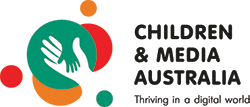White Bird

Short takes
Not suitable under 11; parental guidance to 11 (violence, scary scenes, themes)

This topic contains:
- overall comments and recommendations
- details of classification and consumer advice lines for White Bird
- a review of White Bird completed by the Australian Council on Children and the Media (ACCM) on 3 March 2025.
Overall comments and recommendations
| Children under 11 | Not suitable due to violence, scary scenes and themes. |
| Children aged 11 | Parental guidance recommended due to violence and themes. |
| Children aged 12 and over | Ok for this age group. |
About the movie
This section contains details about the movie, including its classification by the Australian Government Classification Board and the associated consumer advice lines. Other classification advice (OC) is provided where the Australian film classification is not available.
| Name of movie: | White Bird |
| Classification: | PG |
| Consumer advice lines: | Mild violence, coarse language and some scenes may scare young children |
| Length: | 121 minutes |
ACCM review
This review of the movie contains the following information:
- a synopsis of the story
- themes
- use of violence
- material that may scare or disturb children
- product placement
- sexual references
- nudity and sexual activity
- use of substances
- coarse language
- the movie’s message
A synopsis of the story
Following on from Wonder, (the movie) Julian (Bryce Gheisar) is finding it difficult fitting in to his new school, having been expelled from his previous school for bullying Auggie. His grandmother, Sara Blum, (Helen Mirren) visits him one day and decides it’s time to tell Julian her own story of not fitting in. As a girl, Sara (Ariella Glaser) had a happy childhood in a small French village until the day the Nazis arrived. The Jews in the village were rounded up and then the Nazis came to Sara’s school. Sara, along with all of the Jewish students, were led to a truck. Sara and one other girl managed to escape, with the help of their teacher, and hid in the woods where Sara was rescued by Julien (Orlando Schwertd), a boy from her class who had polio.
Julien took Sara back to his home and hid her in the barn. This was at great risk to himself and his very kind parents, Vivienne (Gillian Anderson) and Jean Paul Beaumier (Jo Stone-Fewings). Vivienne looked after Sara like her own daughter for the duration of the war. Unfortunately, more sadness descended on the Beaumier family as the Nazis not only rounded up the Jews, but the sick, gypsies and other so-called ‘undesirables’.
Themesinfo
Children and adolescents may react adversely at different ages to themes of crime, suicide, drug and alcohol dependence, death, serious illness, family breakdown, death or separation from a parent, animal distress or cruelty to animals, children as victims, natural disasters and racism. Occasionally reviews may also signal themes that some parents may simply wish to know about.
WWII; The Holocaust; Bullying; Racism.
Use of violenceinfo
Research shows that children are at risk of learning that violence is an acceptable means of conflict resolution when violence is glamourised, performed by an attractive hero, successful, has few real life consequences, is set in a comic context and / or is mostly perpetrated by male characters with female victims, or by one race against another.
Repeated exposure to violent content can reinforce the message that violence is an acceptable means of conflict resolution. Repeated exposure also increases the risks that children will become desensitised to the use of violence in real life or develop an exaggerated view about the prevalence and likelihood of violence in their own world.
There is some violence in this movie, including:
- School boys bully Julien and tease him for being a cripple. They steal his crutches and hit him with them.
- A ‘Punch and Judy’ show is played, with its usual hitting and punching.
- The school principal, a priest, is shot dead in front of the students. Other characters are also shot.
- Several of the school boys join the Hitler youth. They are given guns, which they use to shoot up a cinema. A gunfight breaks out between the youths and the French resistance. A man is shot dead.
- One of the youths is a particularly nasty bully. He beats Julien up and kicks him. He threatens to put him out of his misery.
- A character is viciously attacked by wolves who go for his throat. He is seen dead on the ground.
- Sara is shot at by the youths who chase after her, shooting at her.
- A group of disabled people are led into the woods and shot.
Material that may scare or disturb children
Under fiveinfo
Children under five are most likely to be frightened by scary visual images, such as monsters, physical transformations.
In addition to the above-mentioned violent scenes, there are some scenes in this movie that could scare or disturb children under the age of five, including the following:
- Many scary scenes of forests in the winter, dark and cold and with wolves howling.
Aged five to eightinfo
Children aged five to eight will also be frightened by scary visual images and will also be disturbed by depictions of the death of a parent, a child abandoned or separated from parents, children or animals being hurt or threatened and / or natural disasters.
In addition to the above-mentioned violent scenes and scary visual images, there are some scenes in this movie that could scare or disturb children aged five to eight, including the following:
- The soldiers march with rifles
- The soldiers chase after Sara into the woods with guns and snarling dogs.
- Sara is afraid of the noises in the barn, such as the mice, bats and birds. She cries during the night.
Aged eight to thirteeninfo
Children aged eight to thirteen are most likely to be frightened by realistic threats and dangers, violence or threat of violence and / or stories in which children are hurt or threatened.
In addition to the above-mentioned violent scenes, there are some scenes in this movie that could scare or disturb children aged eight to thirteen, including the following:
- Shop signs start appearing that say they won’t serve Jews. Sara finds herself unable to go into shops as she was used to.
- Vivienne is visibly upset when Jean Paul tries to persuade her to leave. She can’t bear the thought of abandoning everything they’ve worked for and wants to pretend everything will be ok.
- Julien is inside the cinema when a gunfight breaks out. The Hitler youths smash the chairs where Julien is hiding.
- Julien calls to the bats who swoop down on the youths, terrifying them.
- Sara’s hiding place is discovered by the youths, who fire at her. She manages to escape but is chased into the woods. She hears wolves approaching and is very afraid.
Thirteen and overinfo
Children over the age of thirteen are most likely to be frightened by realistic physical harm or threats, molestation or sexual assault and / or threats from aliens or the occult.
- Sara’s father survives the war but her mother was killed at Auschwitz. The white bird which Sara saw through her loft, represented her mother’s spirit.
Product placement
- None noted.
Sexual references
There are some sexual references in this movie, including:
- Sara and Julien kiss and are seen lying in the loft together, fully clothed.
Nudity and sexual activity
- None noted.
Use of substances
There is some use of substances in this movie, including:
- Julian’s grandmother offers him a glass of wine – which he refuses.
- Some characters smoke.
Coarse language
There is some coarse language in this movie, including:
- Bastards
- Oh God
- Crap
- Bullshit.
- Name calling such as:
- Lying scum
- Clown
- Freak
- Stupid
- Spoilt brat
- Cripple
- Vermin.
In a nutshell
White Bird is based on the graphic novel of the same name by R.J. Palacio, as a sequel to the previous book and movie called Wonder. The film is full of positive messages and conveys the importance of kindness to others, which will remain for a lifetime, and to shine your light in the darkness. It is a very moving story of courage and resistance, and a reminder to not let the mistakes of the past be repeated. It is, however, quite intense in parts and its themes of war make it unsuitable for children under 11. Instead, it is recommended for ages 12 and over.
The main messages from this movie are to not let those who died in the past for our freedom be for nothing; and that darkness cannot drive out darkness, only light can do that.
Values in this movie that parents may wish to reinforce with their children include:
- Courage
- Bravery
- Empathy
- Don’t be mean
- The world of imagination is boundless
- Hatred is not normal
- Resistance to evil.
This movie could also give parents the opportunity to discuss with their children attitudes and behaviours, and their real-life consequences, such as:
- Why Jews were singled out to be exterminated in WWII.
- Parents could also raise the issues of the parallels between what happened during World War II and what is happening now.
Movie Review Search
Title:
Tip: Leave out the first A, An or The
Age suitability:
Selecting an age will provide a list of movies with content suitable for this age group. Children may also enjoy movies selected via a lower age.
About our colour guide
Content is age appropriate for children this age
Some content may not be appropriate for children this age. Parental guidance recommended
Content is not age appropriate for children this age
CMA thanks the Romeo family for its support

About CMA
Children and Media Australia (CMA) is a registered business name of the Australian Council on Children and the Media (ACCM).
CMA provides reviews, research and advocacy to help children thrive in a digital world.
ACCM is national, not-for-profit and reliant on community support. You can help.
ABN: 16 005 214 531
- Home
- Site Map
- Disclaimer
- © Children and Media Australia 2012 - 2025





